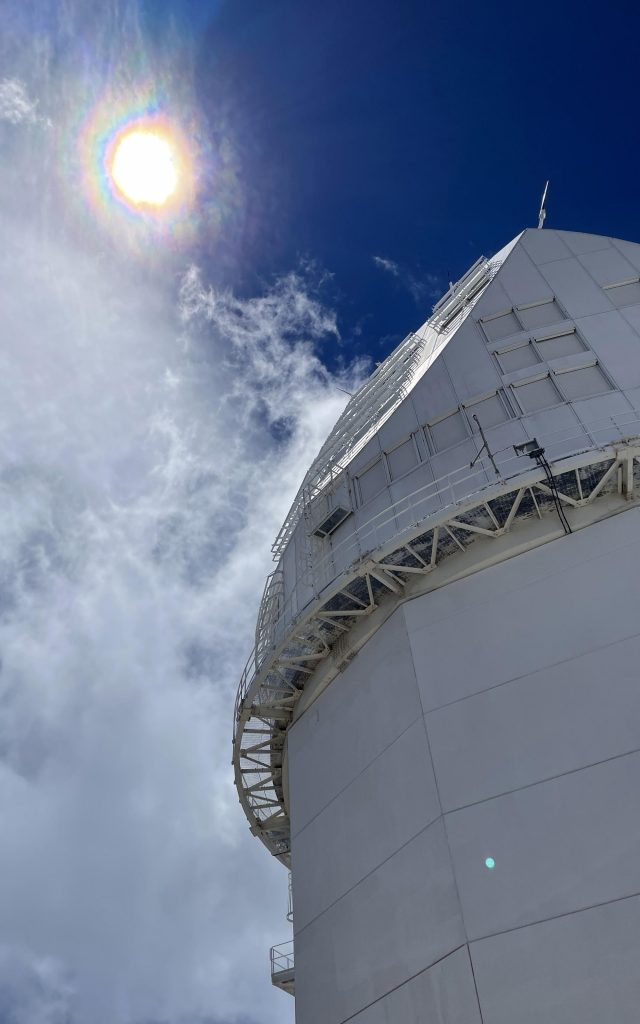Deployment of a neutron monitor on Maui to improve space weather observation

A four-year, $2.5 million grant from the National Science Foundation will fund a project to construct a space weather station center on the UH Mānoa campus and deploy a neutron monitor on Maui.
The University of Hawaiʻi at Mānoa-led project is designed to better predict and understand weather in space.
The UH Mānoa Department of Physics and Astronomy will receive $1.2 million of the $2.5 million grant. UH Mānoa Associate Professor Veronica Bindi, the principal investigator on the project, says her team is collaborating with researchers from the University of New Hampshire and the University of Arizona.
The project will measure the most powerful particles emitted by the Sun, which are solar energetic particles and solar neutron particles. These particles can pose a risk to astronauts and lead to a major failure of electronics in space, such as satellites, and the technologies used in space travel by Elon Musk’s SpaceX and Jeff Bezos’ Blue Origin, according to UH.
On Earth, solar storms may affect the power grid and disrupt radio communications.
This project will help to better monitor the solar particles and develop alert systems to advance our predictions of space weather hazards so that astronauts are safe during space missions. Bindi added that the station and neutron monitor will take approximately three years to construct and will be built just in time for our next “solar maximum,” which is expected sometime in 2025 or 2026.
“Here on the ground, before doing an activity like hiking or surfing, you want to know about the weather. The same is with space mission planning,” said Bindi. “You want to know that the weather is going to be nice, which means that we are not going to have too many particles coming towards our astronauts, instruments and assets in space.”
Bindi is working with UH’s Institute for Astronomy (IfA) to identify a high-elevation site in existing IfA facilities on Maui and obtain necessary approvals and permits to place a neutron monitor, which is about the size of a shipping container.
According to Bindi, the site on Haleakalā was chosen because more particles will be captured the higher the monitor is located above sea level. The monitor will be one of 50 worldwide that will increase the coverage to more parts of the globe.
A data processing center will also be created on the UH Mānoa campus to serve as a hub for the researchers to work and organize the data. They will combine the data gathered on Haleakalā, with energetic particle data from the Alpha Magnetic Spectrometer on the International Space Station, and make their results displayed to the public in real-time.
As the principal investigator, Bindi and UH Mānoa will manage the entire project and be involved in every aspect of its goals. The University of New Hampshire will support the construction of the neutron monitor, with its initial data taking, calibration and data quality. The University of Arizona will work on theoretical models that describe the propagation of particles from the Sun to Earth used to define our space weather results and forecast capabilities.
This UH Mānoa award is one of seven issued by NSF nationwide as part of its first round of awards for the Grand Challenges in Integrative Geospace Sciences: Advancing National Space Weather Expertise and Research toward Societal Resilience program.
These projects focus on two research areas—solar and space physics, and space weather and space climate—which are critical to advancing scientific discovery and protecting the nation’s economy and security. According to NSF, “ANSWERS provides an opportunity for collaboration and a holistic approach to understanding the dynamic, integrated sun-Earth system, as well as the causes of space weather and its effects from ‘sun to mud.’”





_(1)_1750878889339.webp)


